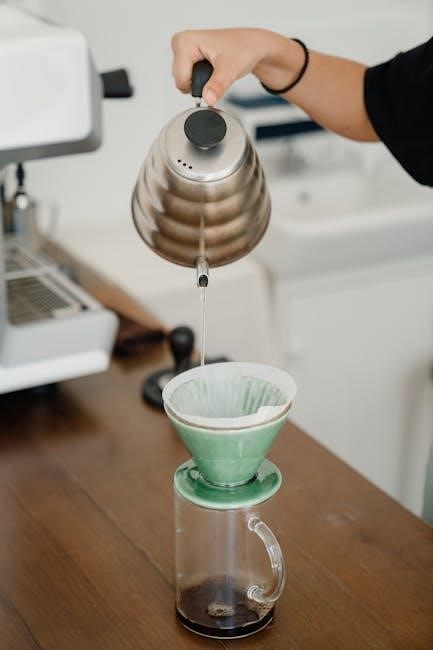
coleman hot tub owners manual
Coleman Hot Tub Owners Manual: A Comprehensive Guide
Welcome! This guide provides vital information for safely and effectively operating your Coleman hot tub. Understand essential safety precautions, installation procedures, and maintenance tips to maximize your enjoyment. This comprehensive resource covers everything from grounding to troubleshooting, ensuring a relaxing spa experience.
Coleman hot tubs offer a blend of relaxation and therapeutic benefits, designed for home use. These portable spas provide a convenient way to unwind and enjoy hydrotherapy. Understanding your Coleman hot tub is the first step to ensuring its safe and efficient operation. This involves familiarizing yourself with its components, features, and the guidelines outlined in the owner’s manual.
Coleman hot tubs, including the SaluSpa models, are designed for easy setup and use, making them accessible to a wide range of users. These spas typically feature inflatable designs, heated water systems, and bubble jet functions for a soothing massage experience. The owner’s manual is crucial for understanding the specific model you have and its unique operational characteristics.
By carefully reviewing the manual, users can learn about proper water chemistry maintenance, filter cleaning, and troubleshooting common issues. The manual also provides essential safety information, such as grounding instructions and warnings about hyperthermia risks. Properly maintained and operated Coleman hot tubs can provide years of relaxation and enjoyment.
Key Safety Instructions
Prioritizing safety is paramount when using a Coleman hot tub. The owner’s manual provides crucial safety instructions to minimize risks of injury or accidents. Before operating your hot tub, carefully read and understand all safety guidelines. These instructions cover a range of potential hazards, including electric shock, drowning, and hyperthermia.
One of the most important safety precautions is ensuring proper grounding of the hot tub. This helps prevent electric shock in the event of a fault. Regularly test the Ground Fault Circuit Interrupter (GFCI) to verify its functionality. Never use the hot tub if the GFCI is not working correctly.
To prevent drowning, always supervise children closely when they are near the hot tub. Secure the cover when the hot tub is not in use to prevent accidental entry. Avoid using the hot tub while under the influence of alcohol or drugs. Limit soak times to prevent hyperthermia, and be aware of the symptoms, such as dizziness, nausea, and unconsciousness. Pregnant women should consult a doctor before using a hot tub.
Grounding Instructions
Proper grounding is essential for the safe operation of your Coleman hot tub. Grounding protects against electrical shock by providing a path for stray electrical current to return to the source. The owner’s manual outlines specific grounding procedures that must be followed precisely.
All Coleman hot tubs designed for 110-120V operation require a dedicated, properly grounded electrical circuit. This circuit should be protected by a Ground Fault Circuit Interrupter (GFCI). The grounding conductor must be connected to a permanent earth ground, such as a grounded metallic cold-water pipe or a grounding electrode system.
Do not use a gas supply pipe for grounding. It’s crucial to consult a qualified electrician to ensure the hot tub is grounded correctly. Improper grounding can lead to serious electrical hazards. Regularly inspect the grounding connections for corrosion or damage and repair as needed. Ensure that all grounding wires are securely fastened and free from any breaks or fraying. Following these grounding instructions will significantly reduce the risk of electrical shock and ensure a safer hot tub experience. Neglecting the grounding instructions could lead to dangerous situations.
GFCI Testing and Maintenance
The Ground Fault Circuit Interrupter (GFCI) is a critical safety device designed to protect you from electrical shock. Your Coleman hot tub is equipped with a GFCI, which constantly monitors the electrical current. If it detects a ground fault, meaning current is leaking outside the intended circuit, it will quickly shut off the power.
Regular testing of the GFCI is essential to ensure it is functioning correctly. The owner’s manual provides instructions on how to test the GFCI, typically involving pressing the “test” button and confirming that the power is interrupted. This test should be performed monthly, or more frequently if recommended in your specific model’s manual.
If the GFCI fails to trip when tested, or if it trips frequently during normal operation, it may be faulty and needs to be replaced. Never attempt to bypass or disable the GFCI. Replacement should only be done by a qualified electrician. Keep the GFCI area clean and dry. Inspect the GFCI regularly for any signs of damage or corrosion. Proper GFCI testing and maintenance are paramount for a safe and enjoyable hot tub experience.
Understanding Hyperthermia Risks
Hyperthermia occurs when your body temperature becomes dangerously elevated, often due to prolonged exposure to high temperatures. Hot tubs, with their heated water, pose a risk of inducing hyperthermia if used improperly. Understanding these risks is crucial for safe hot tub use.
Symptoms of hyperthermia can include dizziness, nausea, headache, rapid heartbeat, confusion, and even unconsciousness. Failure to perceive heat, not recognizing the need to exit, and unawareness of impending hazards are also effects. Pregnant women are at particular risk, as hyperthermia can cause fetal damage. Physical inability to exit the hot tub due to weakness or disorientation further increases the danger, potentially leading to drowning.

To minimize the risk of hyperthermia, limit your soak time, especially when first using the hot tub. The Coleman Saluspa manual recommends no more than 10 minutes at a time. Keep the water temperature at a safe level, ideally below 100°F (38°C). Stay hydrated by drinking plenty of water before, during, and after use. Avoid using the hot tub under the influence of alcohol or medications that can increase your sensitivity to heat. If you experience any symptoms of hyperthermia, exit the hot tub immediately and seek medical attention.
Installation Tips and Guidelines
Proper installation is crucial for the safe and efficient operation of your Coleman hot tub. Before you begin, carefully read the entire owner’s manual, paying close attention to all safety warnings and instructions. Select a suitable location for your hot tub, ensuring it’s a level surface capable of supporting the filled weight. Avoid areas prone to flooding or with overhead obstructions like power lines.
For inflatable models, it’s strongly recommended not to unfold and inflate the spa if the ambient temperature is below 59°F (15°C). Inflating indoors is suggested in colder conditions. Position the spa liner in the desired location before connecting the spa heater and filling it with water. Ensure the water temperature used to fill the spa is within the recommended range.
Connect the hot tub to a dedicated, properly grounded electrical outlet with a GFCI (Ground Fault Circuit Interrupter) for safety. Follow the grounding instructions outlined in the manual. Make sure all connections are secure and watertight. After filling the hot tub, allow the water to heat to the desired temperature before use. Regularly inspect all components for leaks or damage, and address any issues promptly. Following these installation tips will help ensure a safe and enjoyable hot tub experience.
Operating the Hot Tub
Once your Coleman hot tub is properly installed and filled, you’re ready to begin enjoying its relaxing benefits. Familiarize yourself with the control panel, which typically allows you to adjust the water temperature, activate the jets, and control the lighting system. Before entering the hot tub, always check the water temperature to ensure it’s within a safe range, not exceeding 100°F (38°C).
Start by setting the desired water temperature using the control panel. Allow sufficient time for the water to heat up to the set temperature. Activate the jets for a soothing massage experience. Many models offer adjustable jet intensity to customize your massage. Some hot tubs also feature integrated entertainment systems; refer to the JVC owner’s manual (if included) for programming and usage instructions.
Limit your soak time to a maximum of 10 minutes, especially when first using the hot tub or if you have any health concerns. Stay hydrated by drinking plenty of water before, during, and after your soak. After each use, cover the hot tub to maintain water temperature and prevent debris from entering. Regularly monitor the water chemistry and adjust as needed to keep the water clean and balanced.
Water Chemistry Maintenance
Maintaining proper water chemistry is crucial for a safe, clean, and enjoyable hot tub experience. Regular testing and adjustment of your Coleman hot tub’s water are essential to prevent bacteria growth, cloudy water, and damage to the spa components. You will need a reliable testing kit to measure pH, alkalinity, and sanitizer levels (chlorine or bromine).
The ideal pH range for hot tub water is typically between 7.2 and 7.8. Low pH can cause corrosion and irritation, while high pH can lead to scale formation and reduced sanitizer effectiveness. Adjust pH using pH increaser or decreaser as needed, following the product instructions carefully. Total alkalinity should be maintained between 80 and 120 ppm (parts per million) to buffer the pH and prevent drastic fluctuations.
Sanitizer levels (chlorine or bromine) should be kept within the recommended range to kill bacteria and other microorganisms. Follow the manufacturer’s instructions for adding sanitizer. Shocking the water regularly (usually weekly or bi-weekly) helps to eliminate contaminants and maintain water clarity. Regularly clean or replace the filter to remove debris and ensure proper water circulation. Consistent water chemistry maintenance will extend the life of your hot tub and ensure a healthy soaking environment.
Troubleshooting Common Issues
Even with careful maintenance, you might encounter occasional issues with your Coleman hot tub. Addressing these problems promptly can prevent further damage and ensure continued enjoyment. One common issue is cloudy water, often caused by improper water chemistry, inadequate filtration, or a buildup of contaminants. Start by testing and adjusting the water balance, cleaning or replacing the filter, and shocking the water.
Another frequent concern is the hot tub not heating properly. Check the thermostat settings, ensure the heater is turned on, and inspect the filter for clogs. A dirty filter restricts water flow, impacting heating efficiency. If the problem persists, examine the heating element for damage.

If you experience weak jet pressure, inspect the jets for blockages and clean them thoroughly. Low water level can also reduce jet pressure, so ensure the tub is filled to the appropriate level. Error codes on the control panel indicate specific problems. Consult your owner’s manual for code definitions and recommended solutions. If you’re unable to resolve an issue, contacting a qualified spa technician is advisable to avoid further complications and ensure safe repairs.
Coleman Spa Models and Manuals (1993-2003)
This section provides a historical overview of Coleman spa models manufactured between 1993 and 2003, with links to available owner’s manuals. Coleman, in collaboration with Cal Cooperage, produced various spa models during this period, each with specific features and operational guidelines.
Models from 1993-1997 include the 20, 60, and 70 series. Owner’s manuals for these models offer essential information on installation, operation, and maintenance procedures specific to their design.
The 100 Series spas, manufactured from 1997-2000 and again in 2001-2002, represent another significant line. Manuals for the 100 Series detail plumbing configurations, electrical requirements, and troubleshooting tips relevant to those years. The 500 Series, produced in 2000, included unique features detailed in its corresponding manual. The 700 Series spas, manufactured in 2001-2002 and 2003, are also included. Accessing the correct owner’s manual is crucial for understanding the specific requirements and safety guidelines for your particular Coleman spa model. Please note that availability of these manuals may vary.

Winter Use Instructions
Using your Coleman hot tub during winter requires special precautions to prevent damage from freezing temperatures. When the spa is assembled and filled with water, it’s critical not to switch off the spa heater if the ambient temperature is at or below 42.8°F (6°C). Maintaining a minimum water temperature prevents freezing and potential damage to the plumbing and components.

If you are setting up your spa, it is strongly recommended not to unfold and inflate the spa if the ambient temperature is below 59°F (15°C). If the temperature is too cold it is best to inflate the spa indoors before moving it outside. Place the spa liner in the desired outdoor position, connect the spa heater, and fill it with water. Ensure the water used for filling is not excessively cold, as this can strain the heating system. Regular monitoring of water temperature and proper insulation are essential for efficient winter operation.